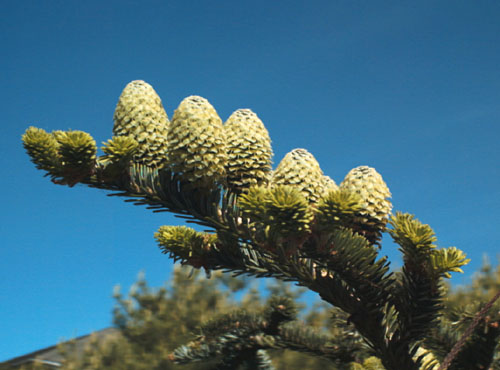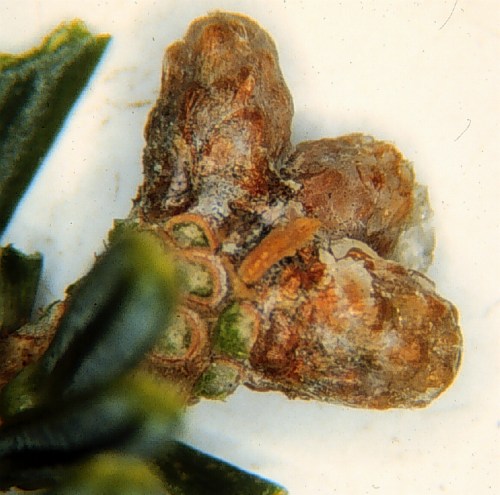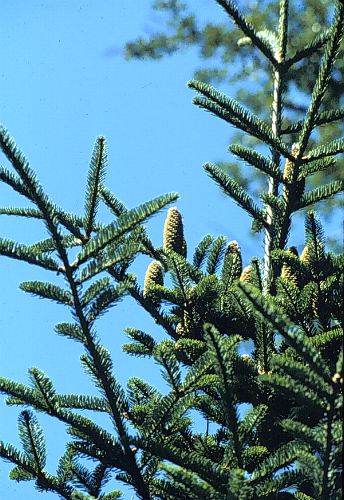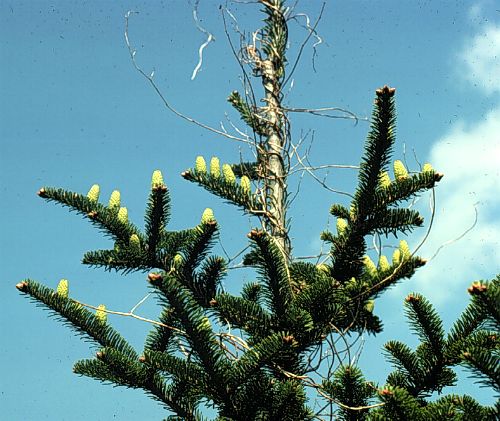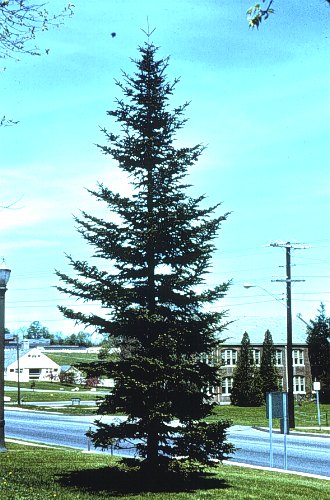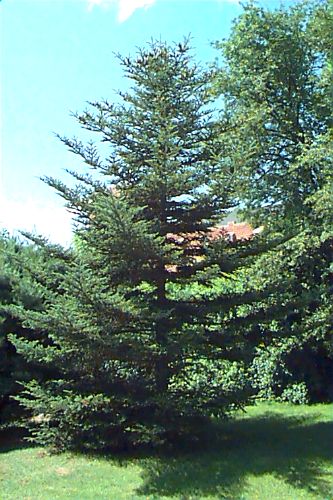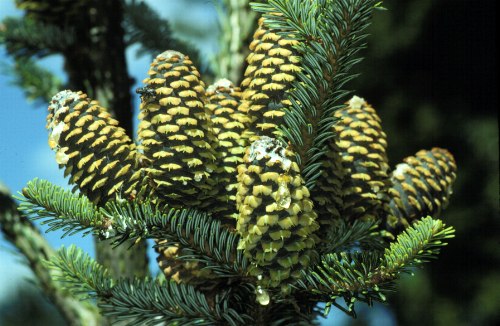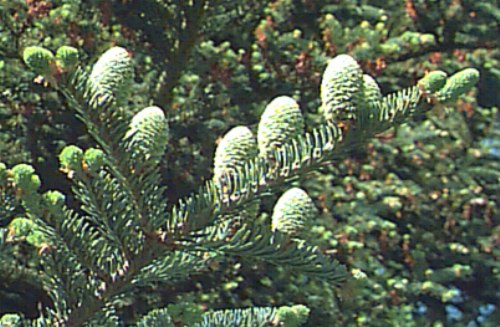Abies fraseri
Fraser Fir, Southern Balsam Fir
Pinaceae
ExpandHabitat
- native to Appalachian Mountains in the southeastern United States
- zone 4
Habit and Form
- evergreen tree
- 30' to 40' tall by 20' to 25' wide
- pyramidal in shape with horizontal branches
- dense when young, more open with age
- fine to medium texture
- slow growth rate
Summer Foliage
- 0.5 to 1" long needles
- resinous buds
- dark green with 2 broad stomatal bands on underside
- entire margins
- needle apex is notched
- needles densely cover stem
- pine scented
Autumn Foliage
- no fall color (evergreen)
Flowers
- no ornamental value
- monoecious
Fruit
- tan to medium brown cones
- purple when immature
- ovoid, 1.5" to 2.5" long and about half as wide
- bracts bend downward and cover scales
- cones shatter on tree soon after maturity
Bark
- smooth, dull green bark turning brown and platy with age
- many resin blisters
- new stems are gray to light brown, very resinous
Culture
- easily transplanted with root pruning
- prefers moist, well-drained loam
- full sun is best
- does better in dry conditions than Abies balsamea
- prefers cooler climates
Landscape Uses
- a favored Christmas tree
- accent or specimen
- decoration
Liabilities
- dislikes high pH
- performs poorly in excessively hot and dry situations
- often damaged by deer
ID Features
- needles have notched tip
- branched held horizontal and relatively short
- dense short needles
- circular leaf scars
- resinous buds
Propagation
- by seed, stratification period beneficial for good germination
Cultivars/Varieties
'Klein's Nest' - A compact, dwarf form not exceeding 3' tall and featuring short needles and small purple cones.
'Prostrata' - A slow-growing selection reaching only about 5' tall and is 10' wide. Develops a nice spreading shape that hugs the ground.
